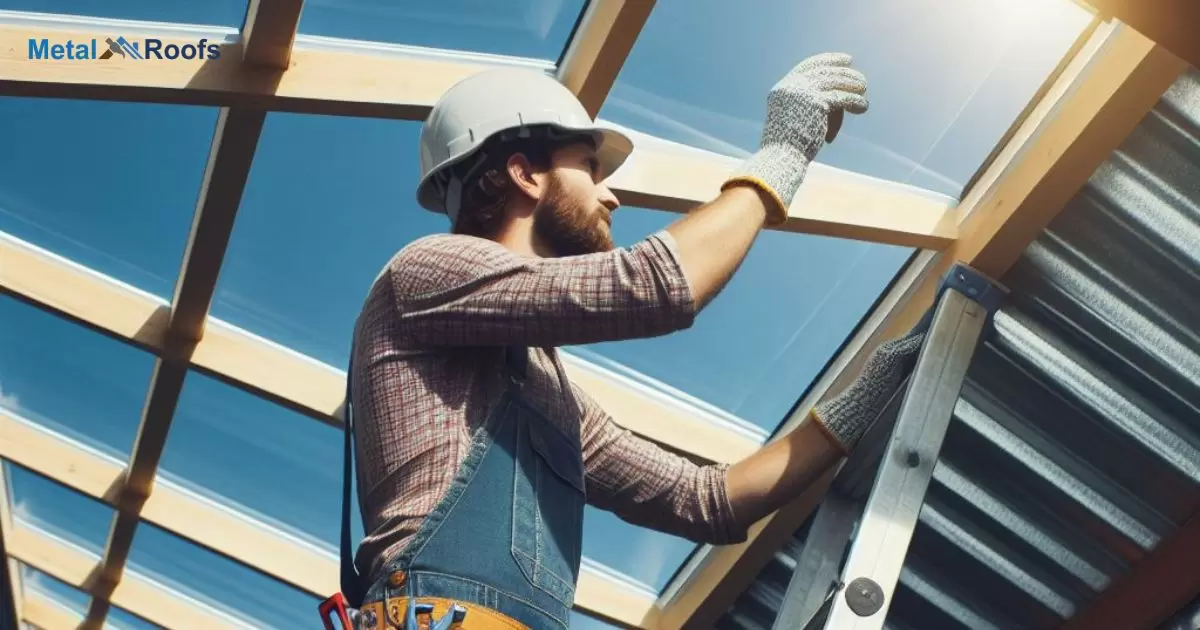Skylights let natural light in. Metal roofs are durable, lightweight. Install skylights on metal roofs safely. Proper flashing prevents leaks. Tubular skylights are energy efficient. UV rays enter through skylights. Natural light boosts productivity.
Installing skylights in the metal roof. Solution combines beauty, function. Enjoy sunshine indoors year-round. Increase energy efficiency too. Durable roofing material lasts long. Proper installation prevents issues. Boost mood with natural lighting. Consider all benefits of skylights.
Installing skylights between trusses involves careful planning to ensure they withstand harsh weather and prevent leaks. Proper flashing is essential for durability and to protect against moisture damage. Tubular skylights efficiently use natural light and require strategic placement for optimal UV ray control.
Key Takeaways
- Installing skylights in metal roofs adds natural light, energy efficiency, and aesthetic appeal to spaces.
- Proper installation involves assessing location, choosing quality skylights, and ensuring watertight sealing.
- Benefits include reduced electricity bills, improved mood, and potential resale value.
- Avoid mistakes like using low-quality materials or improper installation techniques.
- Regular maintenance and inspections help prolong skylight performance and prevent leaks.
Benefits of Skylights in Metal Roofs
Skylights offer several benefits when installed in metal roofs:
Natural Light: One of the primary advantages of skylights is the infusion of natural light into interior spaces. This not only reduces the need for artificial lighting during the day but also creates a brighter and more inviting atmosphere indoors.
Energy Efficiency: By harnessing natural light, skylights contribute to energy savings by reducing reliance on electric lighting. This can lead to lower electricity bills over time, especially in areas where daylight is abundant.
Improved Mood and Well-being: Natural light has been linked to improved mood, productivity, and overall well-being. Having ample sunlight in living or working spaces can enhance comfort and create a more pleasant environment.
Aesthetic Appeal: Skylights can enhance the aesthetic appeal of a building, both from the interior and exterior. They add a touch of architectural interest and can make rooms feel more spacious and open.
Ventilation: Some skylights come with options for ventilation, allowing fresh air to circulate through the space. This can improve indoor air quality and provide additional comfort, especially in areas prone to humidity or stuffiness.
Connection to Nature: Skylights provide a direct connection to the sky and outdoor surroundings, allowing occupants to enjoy views of clouds, stars, or tree canopies. This connection to nature can have psychological benefits and promote a sense of well-being.
Resale Value: Adding skylights to a property can increase its resale value by enhancing its appeal to potential buyers. Skylights are often considered desirable features that can make a home or building more attractive on the market.
Overall, skylights in metal roofs offer a blend of practical benefits, aesthetic appeal, and potential energy savings, making them a popular choice for many homeowners and building owners alike.
Skylight Installation Process
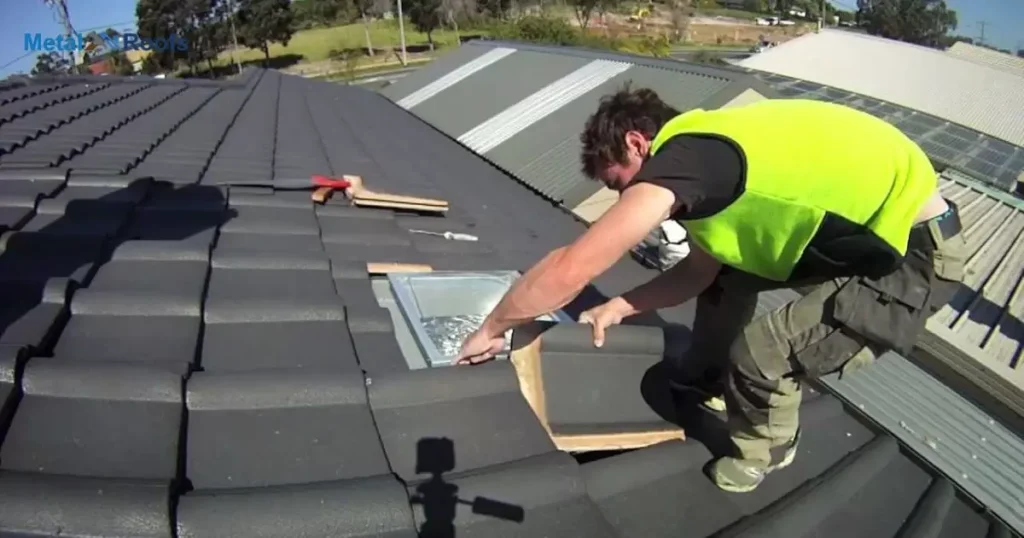
Location Assessment: Determine the best spot for the skylight based on structural compatibility and desired lighting.
Skylight Selection: Choose a skylight that fits the size, shape, and features you want, considering roofing material and necessary accessories.
Roof Opening Preparation:
- Measure and mark the skylight’s location.
- Cut the roof to create an opening slightly larger than the skylight frame.
Flashing Installation:
- Apply waterproofing membrane or flashing around the opening to prevent water infiltration.
Frame Mounting:
- Position and secure the skylight frame in the opening, following manufacturer instructions.
Edge Sealing:
- Apply roofing sealant along the frame edges to ensure a watertight seal.
Glazing Installation:
- Place and secure the skylight glazing onto the frame.
Interior Finishing:
- Install interior trim around the skylight opening for aesthetics and concealment.
Testing and Adjustments:
- Test for leaks and proper operation, making adjustments as needed.
Cleanup and Maintenance: Remove debris and provide maintenance guidelines to the owner.
Final Inspection: Schedule a final inspection to ensure compliance with regulations.
Following these steps and manufacturer guidelines ensures a successful skylight installation.
Choosing the Right Location for a Skylight
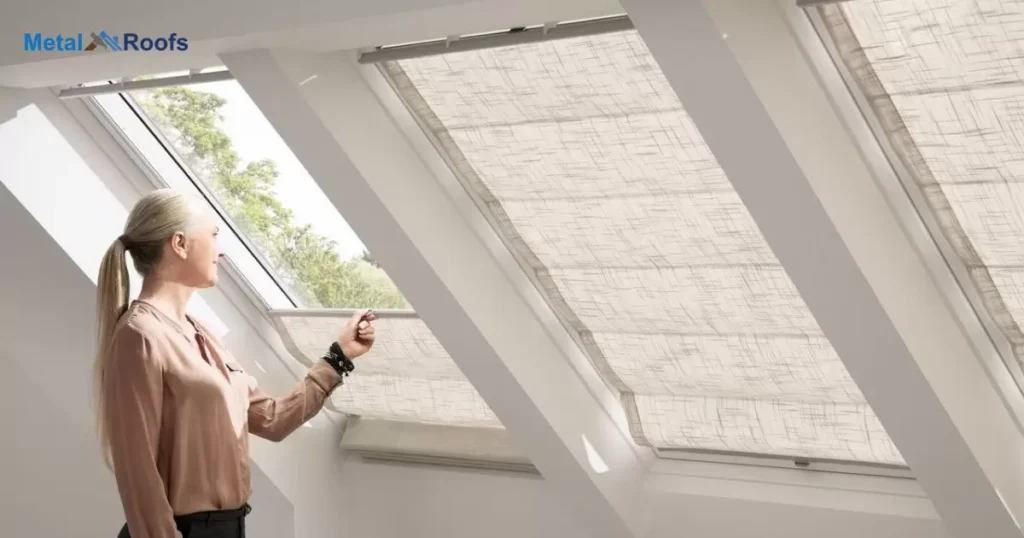
| Consideration | Description |
| Natural Light Needs | Identify areas lacking daylight and prioritize locations where natural light is most beneficial. |
| Roof Space Measure | Accurately measure roof space to determine the appropriate skylight size based on room dimensions and desired light coverage. |
| Sunlight Exposure | Maximize sunlight exposure by considering the roof’s orientation. Avoid obstructions that may block light during the day. |
| Obstruction Avoidance | Avoid installing skylights under large trees or structures that could obstruct light. Consult professionals to ensure safety and structural compatibility. |
To choose the best location for a skylight, start by assessing where natural light is needed most. Look for areas that lack sufficient daylight during the day. Measure the roof space accurately to determine the suitable size for the skylight.
Consider the direction the roof faces to maximize sunlight exposure. Avoid installing skylights directly under large trees or structures that could block light. Lastly, consult with a professional to ensure the chosen location meets safety and structural requirements for skylight installation.
Types of Skylights for Metal Roofs
Skylights come in various types designed to suit different needs and preferences when installed on metal roofs. Here are a few common types:
Fixed Skylights: These are stationary skylights that do not open or close. They are ideal for bringing in natural light and are often used in areas where ventilation is not a priority.
Ventilating Skylights: Also known as operable skylights, these can be opened to allow fresh air circulation. They are beneficial for improving indoor air quality and controlling humidity.
Tubular Skylights: These skylights consist of a small dome on the roof connected to a reflective tube that channels light into the room. They are great for smaller spaces or areas where a traditional skylight may not fit.
Flat Roof Skylights: Designed specifically for flat or low-pitched roofs, these skylights are installed flush with the roof surface. They provide a sleek and modern look while still allowing ample natural light.
Solar-Powered Skylights: These skylights are equipped with solar panels that power built-in motors for opening and closing. They are energy-efficient and offer convenient operation without the need for electrical wiring.
Each type of skylight has its advantages and considerations, so it’s essential to choose the right one based on factors like roof pitch, desired functionality, budget, and aesthetic preferences. Consulting with a skylight professional can help in selecting the most suitable type for your metal roof.
Deck-Mounted vs. Curb-Mounted Skylights
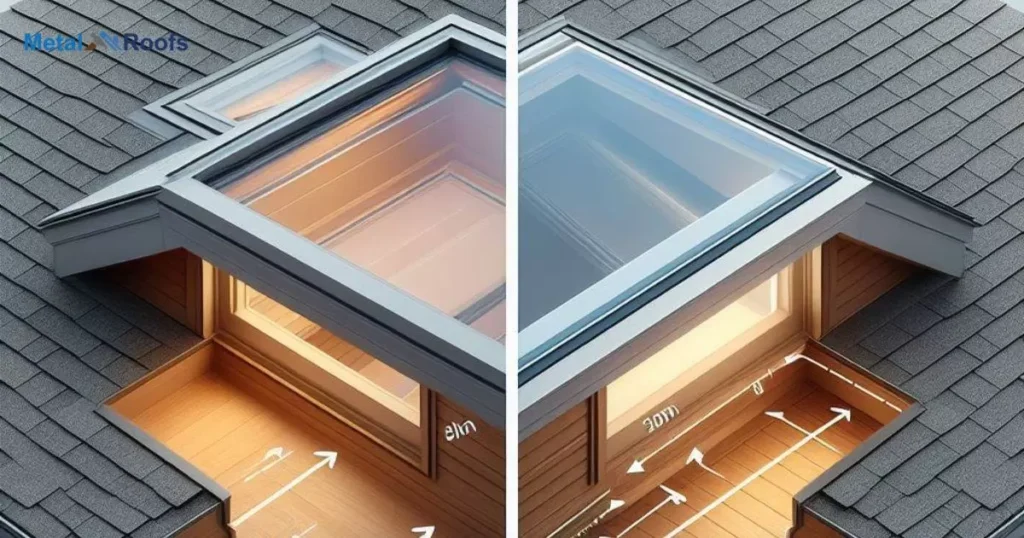
Deck-mounted and curb-mounted skylights are two common types of installations, each with distinct characteristics and installation processes.
Deck-Mounted Skylights:
- Installation: These skylights are installed directly onto the roof deck, sitting flush with the roofing material.
- Appearance: They have a sleek and streamlined appearance since they sit flat on the roof without a raised curb.
- Advantages: Deck-mounted skylights are easier to install and provide a seamless look with the roofline, making them aesthetically pleasing.
- Considerations: They may require additional flashing and waterproofing measures to ensure a tight seal against leaks.
Curb-Mounted Skylights:
Installation: Curb-mounted skylights are installed on a raised curb or frame that sits above the roof deck.
Appearance: They have a more noticeable presence on the roof due to the raised curb, which can impact the overall architectural look.
Advantages: Curb-mounted skylights provide added height clearance and may offer better insulation around the opening.
Considerations: The curb adds complexity to the installation process and may require custom flashing to ensure proper weatherproofing.
When choosing between deck-mounted and curb-mounted skylights, consider factors such as roof pitch, aesthetics, insulation needs, and installation complexity.
Deck-mounted skylights are often preferred for their simplicity and sleek design, while curb-mounted skylights offer advantages like increased height and insulation options. Consulting with a skylight professional can help determine the best option for your specific roofing needs and design preferences.
Noise Consideration in Metal Roofs
Metal roofs can amplify outside noises like rain and hail, making them louder indoors. To minimize this, consider installing insulation or soundproofing materials during the roof’s construction.
Choosing the appropriate materials can significantly reduce noise levels while still enjoying the benefits of a durable metal roof.
Energy Efficiency of Skylights in Metal Roofs
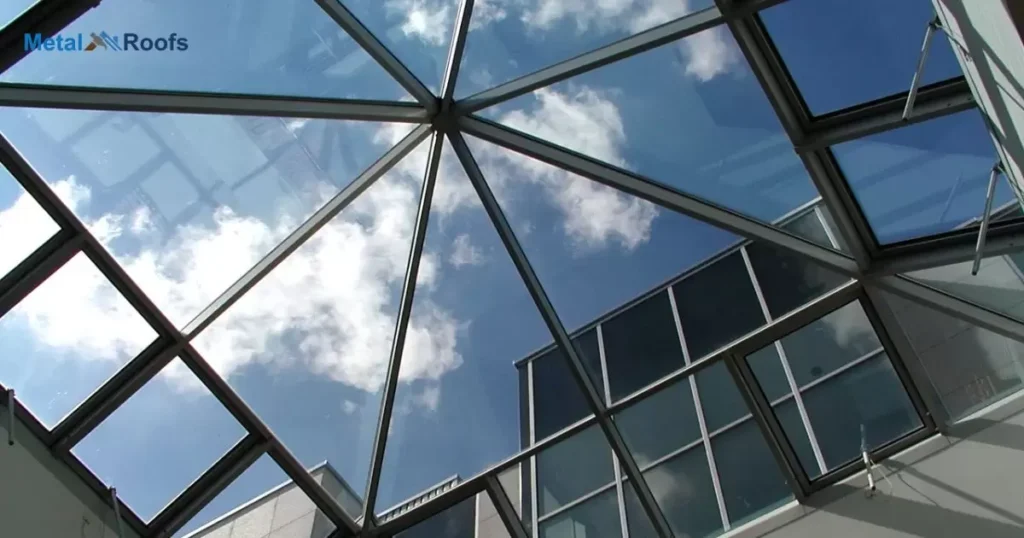
Skylights in metal roofs boost energy efficiency. They let in natural light, cutting down on electric bills. This light brightens spaces without extra lighting.
You save money and reduce your carbon footprint. Plus, natural light improves your mood and focus. It’s a win-win for your wallet and well-being.
Frequently Asked Questions
How do you seal a skylight on a metal roof?
To seal a skylight on a metal roof, use waterproof flashing. Apply roofing sealant around the edges for a watertight seal.
Can you install a skylight in an existing metal roof?
Yes, you can install a skylight in an existing metal roof. Ensure proper measurements and follow installation guidelines for a watertight seal.
What not to do when installing a metal roof?
Avoid these mistakes when installing a metal roof:
- Don’t skimp on quality materials or installation techniques.
- Avoid improper fastening or neglecting proper flashing and sealing.
Conclusion
This upgrade reduces energy usage and creates a more comfortable atmosphere. Skylights also elevate aesthetics, improving the overall appearance of the structure. Overall, skylight installation in metal roofs offers numerous benefits, from energy efficiency to enhanced aesthetics.
Proper installation ensures durability and prevents leaks over time. Regular maintenance maintains skylight functionality and prolongs its lifespan. Overall, skylights in metal roofs are a practical and visually appealing investment for any property.
